Volume 31
Displaying 1-7 of 7 articles from this issue
- |<
- <
- 1
- >
- >|
-
2021 Volume 31 Pages 1-18
Published: February 28, 2021
Released on J-STAGE: March 29, 2022
Download PDF (1856K) -
2021 Volume 31 Pages 19-32
Published: February 28, 2021
Released on J-STAGE: March 29, 2022
Download PDF (1776K) -
2021 Volume 31 Pages 33-54
Published: February 28, 2021
Released on J-STAGE: March 29, 2022
Download PDF (1804K)
-
2021 Volume 31 Pages 55-72
Published: February 28, 2021
Released on J-STAGE: March 29, 2022
Download PDF (1779K) -
2021 Volume 31 Pages 73-88
Published: February 28, 2021
Released on J-STAGE: March 29, 2022
Download PDF (1874K)
-
2021 Volume 31 Pages 89-109
Published: February 28, 2021
Released on J-STAGE: March 29, 2022
Download PDF (1749K)
-
2021 Volume 31 Pages 111-114
Published: February 28, 2021
Released on J-STAGE: March 29, 2022
Download PDF (1641K)
- |<
- <
- 1
- >
- >|
